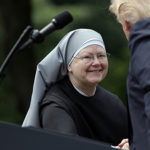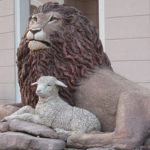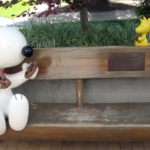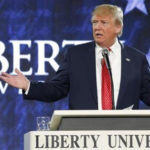A recent survey on religious affiliation in the United States conducted by the Pew Forum on Religion and Public Life reveals religious affiliation in the United States “is both very diverse and extremely fluid.”
Among the significant findings of the survey is that Americans remain a very religious people. More than 83 percent of respondents identified with a particular religious tradition, and an additional 5.8 percent identified themselves as religious, but not affiliated with any particular faith. More than 78 percent said they identify with the Christian tradition. Other faith groups included Jews, 1.7 percent; Buddhists, 0.7 percent; Muslims, 0.6 percent and Hindus, 0.4 percent.
The fluidity of religious affiliation in America is revealed by the fact 28 percent of adults have left the faith of their childhood and an additional 16 percent have moved from one denomination to another in the Protestant tradition.
Protestants are losing their dominance. Barely 51 percent of Americans claim to be Protestant, although more than 26 percent of Americans are members of evangelical churches. American Catholics have been impacted most significantly by the active American marketplace, having suffered the greatest percentage loss to religious affiliation. Immigration, however, has sustained this largest Christian tradition—with Catholics now constituting nearly 23.9 percent of the population.
The Pew survey affirms a longstanding truism: Religious commitment and pluralism flourish in a nation committed to religious liberty and the separation of church and state.
Indeed, religious diversity has characterized American life since the colonial era. The multiplicity of Christian sects led to grudging religious toleration in some colonies and principled commitment to freedom in others. Still, by the time of the American Revolution, nine of the 13 colonies claimed established churches. During the Revolutionary Era, many of these lost their privileged status as more Americans drew connections between their fight against the political tyranny of Great Britain and the tyranny of established religions.
Religious pluralism and a growing commitment to a religiously neutral state no doubt informed the framers of the U.S. Constitution. Consequently, the original Constitution was silent on religion except for Article VI’s ban on religious tests to hold public office. Baptists and others of religious dissenting traditions, though, voiced the need for a more explicit protection of religious liberty. Thus, the First Amendment was born.
The religion language of the First Amendment, “Congress shall make no law respecting an establishment of religion, or prohibiting the free exercise thereof,” embodies two complementary principles—no establishment (separation) and free exercise (freedom). These two clauses work together to ensure religious freedom for all Americans. It has long been recognized that full religious freedom would not be possible without the separation of church and state. As the 19th century church historian Philip Schaff declared: “The relationship of church and state in the United States secured full liberty of religious thought, speech, and action, within the limits of the public peace and order. … Such liberty is impossible on the basis of a union of church and state.”
What have these twin principles of separation and freedom wrought? As the Pew survey reveals, America has some of the highest percentages of religious commitment in the world. Religious diversity, today much broader than the multiple Protestant sects of the nation’s early history, attests to the religious freedom enjoyed by all Americans.
Sign up for our weekly edition and get all our headlines in your inbox on Thursdays
Religious experimentation also has been a hallmark of American religious history, witnessed by such indigenous religions such as Mormons and Jehovah’s Witnesses. The fluidity of American religion not only reveals the free market tradition of religion in America, but also confirms James Madison’s observation long ago: “For it is known that this religion both existed and flourished, not only without the support of human laws, but in spite of every opposition from them.”
One of the consequences of the high levels of religious identity in the United States is that we find ourselves frequently wrangling over the proper role of religion in American public life. As we debate where to draw the lines separating church and state, it is worth remembering that the principle of separation has not only guaranteed our religious freedom but also has fostered the dynamic religious culture of the United States.
J. David Holcomb is associate director of the University of Mary Hardin-Baylor’s Center for Religious Liberty in Belton.














We seek to connect God’s story and God’s people around the world. To learn more about God’s story, click here.
Send comments and feedback to Eric Black, our editor. For comments to be published, please specify “letter to the editor.” Maximum length for publication is 300 words.